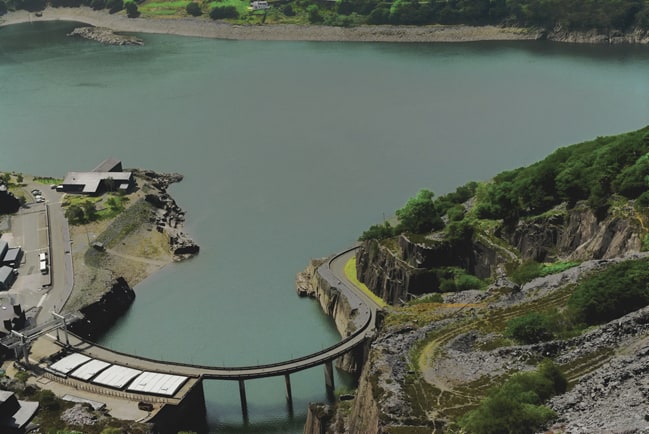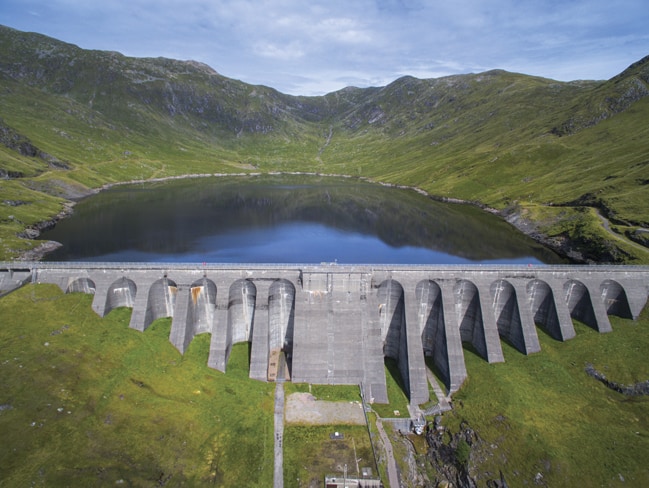It can be hard to imagine after the travails of a typically blustery winter, but the wind does not always blow in the UK.
This means the country’s increasing number of wind turbines, which provided 11 per cent of our electricity supply in 2015, are not always spinning at times of peak demand. Conversely, the wind often blows at night, when demand is low.
This can make life very difficult for the National Grid, which has to ensure there is always sufficient electricity available to meet demand. Last year, for example, UK wind farms were paid £90m not to produce energy at times of low demand.

Although the supporters of renewables counter that the difficulties of incorporating them onto the grid have been exaggerated, since wind speeds tend to vary across the country at any given time, thereby helping to balance out supply, the problem is likely to grow as their use increases.
To tackle this problem, two government-funded reports, both published in March, argue that electricity storage will need to play a significant role in the UK’s future energy mix.
The reports, by the National Infrastructure Commission and the Carbon Trust, both argue that energy storage could ease constraints on the grid by allowing excess electricity produced by generators to be siphoned off and used later when demand is higher. This could save the UK electricity system between £2.4bn and £7bn a year by 2030, depending on the regulatory framework in place.
The most mature of all the available energy-storage technologies is pumped hydro, in which low-cost electricity is used to pump water uphill to a reservoir at night, and the water is then allowed to flow back downhill during the day, to drive a turbine.
In order to utilise all or at least a significant portion of the available renewable energy, we will need a storage technology with a large capacity, according to Prof Ånund Killingtveit, department of hydraulic and environmental engineering at the Norwegian University of Science and Technology.
“Storage is expensive, and [pumped hydro storage] is really the only technology that can supply large, grid-scale storage at a low cost,” he said.
What’s more, the technology can respond to demand in a matter of seconds, he said. “With an ability to respond almost instantaneously to changes in demand or supply, pumped storage is an essential component in the electricity network.”
As a result, there is growing interest in increasing the UK’s pumped hydro storage capacity. Scottish Power said recently that it could add 400MW of on-demand electricity to the UK market by building a new dam in front of the existing one at its Cruachan plant near Oban, if it can secure a guaranteed floor price for its use from the government.
Meanwhile, UK firm Quarry Battery is seeking planning approval to build a new 99.9MW pumped hydro energy storage facility at Glyn Rhonwy in Snowdonia in Wales.
The project would see two disused slate quarries converted into the upper and lower reservoirs of the pumped hydro plant, according to Dave Holmes, managing director of Quarry Battery.
The plant will be equipped with two reversible-speed Francis pump turbines, which will act as a pump in one direction, to push the water up the hill, and as a turbine in the other, to generate electricity.
But it will differ from the existing pumped hydro stations in the UK in its use of a variable-speed drive, said Holmes. This should allow the plant to operate much more flexibly.

Variable-speed drives enable turbines to operate at peak efficiency over a larger portion of their operating band. They also allow a plant to quickly vary the amount of power it consumes in pumping mode, meaning it can be used to regulate the frequency of the grid by drawing off more or less electricity as required.
“This fast response can allow for compensation of power fluctuations and damping of power oscillations, and thereby improve the stability and frequency control of the power system,” said Killingtveit.
While the technology itself is not new – variable-speed pump turbines were developed and used in Japan in the 1990s – the age of many of the world’s pumped storage plants means it has yet to be applied in the UK.
For example, the UK’s largest existing pumped hydro station, 30-year-old Dinorwig in Snowdonia, has six single-speed turbines that can generate up to 288MW, said Holmes. However, the turbines cannot generate any less than 133MW, as operating at this level causes them to stall.
“With our scheme we will have a variable-speed drive, which enables us to go anywhere we like, from -100 to +100MW,” he said. “This allows us to be much more flexible, to follow the load and to carry out frequency regulation more easily.”
This will be particularly important at the quarry storage facility, where the reservoirs are deeper than conventional pumped hydro sites, said Holmes. This means there is a considerable change in pressure between the start of the day, when the upper reservoir is full and the lower reservoir empty, and the end of the day when the reverse is true, he said.
To cope with this, Glyn Rhonwy will need a slightly over-sized turbine, with a wider operating range than conventional plants. The variable-speed drive will help to manage this, said Holmes.
In a conventional, single-speed pump turbine, the magnetic fields of the stator and the rotor are coupled, and always rotate at the same speed.
In a variable-speed machine, in contrast, the magnetic fields are decoupled, for example, by using
a frequency converter between the grid and the stator winding.
The technology is more expensive and complex than traditional single-speed pump turbines, which operators will therefore need to take into account when weighing up the benefits of upgrading existing pumped hydro storage plants, or building new ones, according to Killingtveit.
But with the growth in the use of renewables, the greater flexibility that is offered by variable speed technology could allow pumped storage facilities to provide a larger, and far more lucrative, range of services to the grid.
Used in this way, the technology could give this most mature form of energy-storage battery a whole new lease of life.




Red Bull makes hydrogen fuel cell play with AVL
Formula 1 is an anachronistic anomaly where its only cutting edge is in engine development. The rules prohibit any real innovation and there would be...